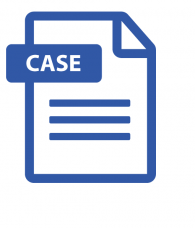We use cookies to make your experience better. To comply with the new e-Privacy directive, we need to ask for your consent to set the cookies. Learn more.
Grounding Of the Boeing 737 Max 8 (A): What Went Wrong?
In the short time between October 2018 and March 2019, two new Boeing 737 MAX 8 airplanes in different parts of the world were involved in deadly crashes. In both cases, the aircraft developed difficulties in seemingly calm weather and crashed shortly after takeoff, killing everyone on board. Preliminary investigations pointed to failures in a new automated software-driven system called the Maneuvering Characteristics Augmentation System (MCAS) that had caused both aircraft to pitch forward and potentially nosedive. The probe also revealed gaps in the documentation and testing of the MCAS system and a lack of adequate pilot training. Case (A) delves into the causes of the 737 MAX crashes, Boeing leadership's questionable responses and poor crisis management, and the fallout from the grounding. It describes the erosion of a culture of integrity and mismatched management expectations that ultimately led to cutting corners and breakdowns in the engineering and development process. Participants have the opportunity to analyze the critical issues in the case and answer the crucial question posed by aviation expert Andy Stephen: How could a disaster of this magnitude occur in an industry so advanced and sophisticated, and so driven by safety? Case (B) looks at the timeline of events surrounding the recertification of the 737 MAX, from the investigations immediately following the first crash to early August 2020, when initial test flights for recertification commenced, following intense internal reviews. The case considers the sequence of events from various angles: regulatory approvals, the company's financial performance, its corporate culture, and how the COVID 19-related slowdown affected Boeing's efforts to get the 737 MAX off the ground. Stephen, having followed the events closely and having understood the gravity of the situation, poses the following key questions: What would it take for the MAX to fly again? And when could it happen?
Learning Objective:
The case can be used for discussion around:
- Lessons learned for governance and management of complex organizations
- Strategic decisions and risk management under uncertainty, competitive dynamics and time pressures
- Leadership styles and impact on organizational culture, behaviour and risk of stress dysfunction
- Guardrails and conflict resolution between marketplace drivers and engineering development
- Nurturing an open organizational culture and alignment with business goals
- Crisis management
-
 Human Resource Management
Grounding of the Boeing 737 Max 8 (B): The Road Ahead-Making The Boeing 737 Max Flightworthy Again
Human Resource Management
Grounding of the Boeing 737 Max 8 (B): The Road Ahead-Making The Boeing 737 Max Flightworthy AgainIn the short time between October 2018 and March 2019, two new Boeing 737 MAX 8 airplanes in different parts of the world were involved in deadly crashes. In both cases, the aircraft developed difficulties in seemingly calm weather and crashed shortly after takeoff, killing everyone on board. Preliminary investigations pointed to failures in a new automated software-driven system called the Maneuvering Characteristics Augmentation System (MCAS) that had caused both aircraft to pitch forward and potentially nosedive. The probe also revealed gaps in the documentation and testing of the MCAS system and a lack of adequate pilot training. Case (A) delves into the causes of the 737 MAX crashes, Boeing leadership's questionable responses and poor crisis management, and the fallout from the grounding. It describes the erosion of a culture of integrity and mismatched management expectations that ultimately led to cutting corners and breakdowns in the engineering and development process. Participants have the opportunity to analyze the critical issues in the case and answer the crucial question posed by aviation expert Andy Stephen: How could a disaster of this magnitude occur in an industry so advanced and sophisticated, and so driven by safety? Case (B) looks at the timeline of events surrounding the recertification of the 737 MAX, from the investigations immediately following the first crash to early August 2020, when initial test flights for recertification commenced, following intense internal reviews. The case considers the sequence of events from various angles: regulatory approvals, the company's financial performance, its corporate culture, and how the COVID 19-related slowdown affected Boeing's efforts to get the 737 MAX off the ground. Stephen, having followed the events closely and having understood the gravity of the situation, poses the following key questions: What would it take for the MAX to fly again? And when could it happen?
Learning Objective:
The case can be used for discussion around:
- Lessons learned for governance and management of complex organizations
- Strategic decisions and risk management under uncertainty, competitive dynamics and time pressures
- Leadership styles and impact on organizational culture, behaviour and risk of stress dysfunction
- Guardrails and conflict resolution between marketplace drivers and engineering development
- Nurturing an open organizational culture and alignment with business goals
- Crisis management
Harsh ManglikGeetika ShahAnusha PariharSaumya SindhwaniPublished: Oct 24, 2021

